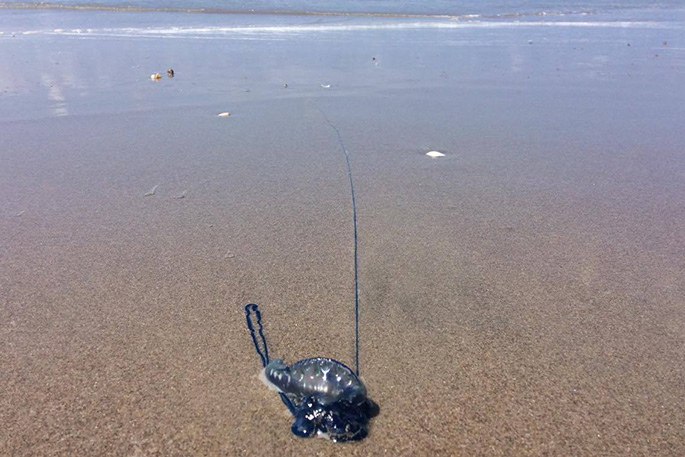Seen a lot of jellies on the beach so-far this summer?
Never fear, Niwa emeritus researcher and jellyfish expert Dr Dennis Gordon says it’s just that time of year.
"As soon as the days start to get longer and there's more daylight, you get a bloom of more plankton," says Dr Gordon.
"When there is more plant plankton, there's more animal plankton, which means you get more shrimps and things - and jellyfish feed on those small crustaceans."
Though jellyfish stay near the surface to follow food supplies, weak directional powers see many jellies collect in dense groups and wash up on NZ's shores.
Of the 35 species of jellyfish living in New Zealand's waters, three are most commonly spotted: the moon jellyfish, lion’s mane and spotted jellyfish.
Large numbers of bluebottle jellyfish have also been found on beaches across West Auckland recently, steered by the wind "onto the shore because they are light and have a gas-filled float”, says Dennis.
"Despite being really beautiful, the lion’s mane and spotted jellyfish can produce a very painful sting, as can the bluebottle.”
 Large numbers of bluebottle jellyfish have also been found on beaches across West Auckland recently. Photo: Rochelle Stewart.
Large numbers of bluebottle jellyfish have also been found on beaches across West Auckland recently. Photo: Rochelle Stewart.
If you're swimming and see a jellyfish in the water, you will likely be able to out-swim it.
"Those who do plan on getting in the water should be cautious and wear a wetsuit if it is known that there may be jellyfish in the area," he says.
"Jellyfish are enchanting, delicate creatures that should be appreciated, just not too close."
A jellyfish sting is caused by the thousands of microscopic stinger capsules (nematocysts) located on the surface of the tentacles - though it is best not to touch the tentacles of a jellyfish, it is safe to touch the top of the bell.
Common symptoms of a jellyfish sting include a burning sensation on your skin, a tingling or numbness where the sting occurred, and the sting area turning purple or red, however most stings in NZ waters are not dangerous.
Treating a sting requires the same method despite the type of jellyfish involved. If stung, flush out the sting area with seawater to remove the tentacles, then use a dry towel to remove any remaining tentacles. Immerse the sting in comfortably hot water for 15 to 20 minutes, and use pain antihistamines if required.
The common old wives tale of using urine to treat a sting is a popular misconception, and as there is no way of telling its pH and chemical makeup, it could actually make the pain worse.



0 comments
Leave a Comment
You must be logged in to make a comment.